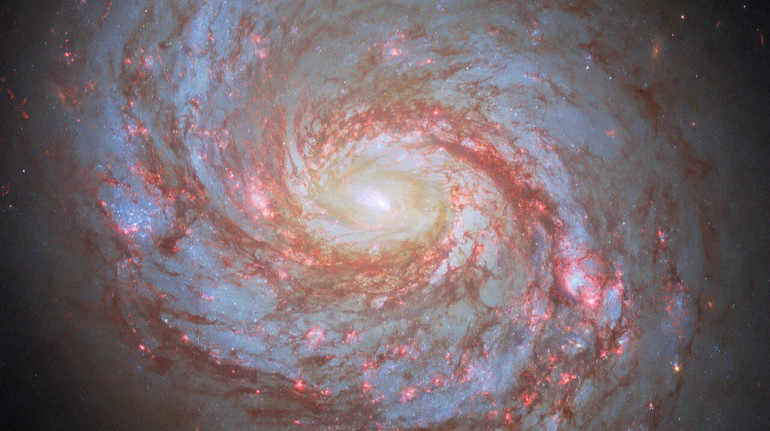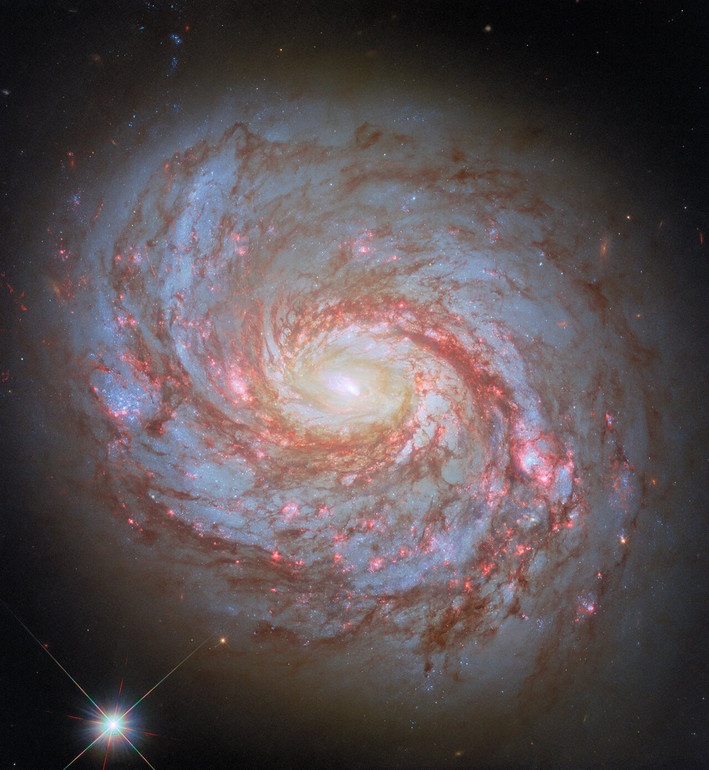Hubble showed a spiral galaxy in the constellation of whale

In the picture the galaxy is located “face” to the ground
Photo: ESA/Hubble & NASA, LC HO, D. Thilker
The Hubble Space Telescope has recorded the amazing spiral galaxy of Massier 77, located in the constellation of the whale at a distance of 45 million light years from Earth.
Photo Published European Space Agency.
On it the galaxy is located « face » to us. In the center of the frame is a bright core surrounded by twisted spiral sleeves, littered with pink outbreaks of new stars and dark red dusty matter.
The atmosphere is complemented by a bright star in the lower left corner and numerous dull stars against its background.

A large plan of spiral galaxy
Photo: ESA/Hubble & NASA, LC HO, D. Thilker
Massier 77 was first recorded in 1780 by the French astronomer Pierre Menshen. It was later included in the famous astronomer catalog – a list of objects that are easy to confuse with comets.
For a long time, scientists have considered it simply a nebula or star cluster. Only over a hundred years later it became known that it was a full -fledged galaxy, separate from the Milky Way.
Mescier 77 also has a different name – « Kalmar Galaxy ». It is caused by an unusual structure – filamentous formations that envelop the galaxy, like a tentacle. It is not only a striking visual effect, but also an example of how modern technologies allow us to open the nature of objects in the universe deeper.
A preliminary shot of a squid galaxy who made « Hubble » was published In 2013. The updated image presented by scientists today combines the latest observations with different filters and improved processing methods.
Hubble before Helped The International Astronomy Group is a breakthrough in the study of one of the most mysterious planets of the solar system – Uranus. Using the space telescope data, the researchers were able to determine with the unprecedented accuracy at what speed the inner part of the planet rotates.







